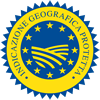Description
The Pâté Gaumais PGI is a pie made with pastry and filled with choice cuts of marinated pork in a traditional, local method.
Production Area
Pâté Gaumais PGI is made in the extreme south of Wallonia, in the Gaume, the southern part of Belgium which, with Arlon, is part of the Belgian Lorena.
Production Method
Pâté Gaumais PGI is made by both butchers and bakers. The pastry is made with yeast and is light and slightly sweet. The filling is made with choice cuts of pork such as spiering and never with other cuts such as belly or any other secondary cuts. The meat is cut into large pieces and left to marinate. For the marinade the following ingredients only are used: red wine, white wine, vinegar, garlic, shallots, onion, parsley and fresh carrots, salt, pepper, sage, thyme, bay leaves, juniper berries and cloves. The pie is then baked in the oven.
Appearance and Flavour
Pâté Gaumais PGI is a round pie with a diameter of approximately 15 cm. It weighs a minimum of 200 gr and the meat content has to be at least 30% of the total weight. Notes of garlic, shallot, bay leaves, juniper berries and cloves and the fragrance of other spices can be detected in the distinctive aroma of this pie.
History
The original recipe for Pâté Gaumais PGI dates back to the end of the 19th century and is attributed to two butchers from Virton, Mr. Leroux and Mr. Subitte. Since then the recipe has been made by many others with each new maker adding a personal touch without however altering the original characteristics and the merits of the original recipe.
Gastronomy
Pâté Gaumais PGI can be kept in the fridge for three or four days. To keep it for any longer it should be frozen or vacuum packed. It can be eaten on its own as a snack but it is particularly good eaten with a salad and a glass of good red or dry white wine or Trappiste d'Orval beer.
Marketing
This pie is sold as Pâté Gaumais PGI. It is sold with an edible wafer in the centre bearing the words Pâté Gaumais.
Distinctive Features
Pâté Gaumais PGI owes its distinctive taste and flavour to its elaborate production method. Two different tradesmen are involved in its making, the baker who makes the pastry and the butcher who makes the filling and the marinade.









